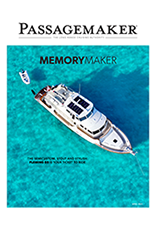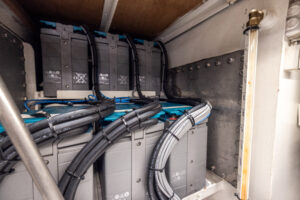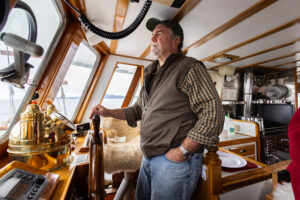
Anyone who has grown up around the water has at one point written a note, put it in a bottle, and cast it into the sea. Personally, I never found a bottle that wasn’t my own, thrown into an incoming tide as a child – a quick return to sender. But messages in bottles are not just the work of deserted island dwellers and small children. During the Age of Sail, drift bottles were dropped by the world’s navies to track currents as they searched for the fastest routes between ports. The date, time, and location of the jettison was recorded in a ship’s log with the hopes that if someone found the bottle, they would return the note to their respective government along with the location of its discovery.

On the 12th of June in 1886, the captain of the German sailing barque, Paula recorded a drift bottle being thrown from the ship while it sailed from Cardiff, Wales, to the Dutch East Indies, or as it is known today, Indonesia. For over a century that entry in the ship’s Meteorological Journal was nothing more than a relatively meaningless piece of data preserved in German archives.

That data point gained relevance as the bottle that was jettisoned overboard 134 years ago was found on a beach in Western Australia, just north of Wedge Island, on January 21, 2018.
Tonya Illman discovered the bottle half-buried in the sand as she was walking along the dunes with a friend. At first, Tonya didn’t realize the bottle contained a message, simply thinking the bottle itself (a 19th-century Dutch gin bottle) was a beautiful find. It was only later that her son’s girlfriend noticed the note inside when she tried to remove the sand.

Slightly damp and tightly rolled, the Illmans carefully removed the note and dried it out before unrolling it. There was great anticipation amongst the family as they waited to see what the message would reveal. As they unrolled the note, they noticed that there was both print and faint handwriting on it, but it was in German. Tonya has a basic understanding of German and began to decipher the note. Some of the date, the recorded coordinates, and the ship’s name were easily legible. The year was printed as “18__” but Kym found it hard to believe that the bottle and message were that old based on how exposed and easily found the bottle was. After realizing that they had something potentially over a century old, they decided to take it to the Western Australian Museum where they embarked on a journey to authenticate the message.

What handwriting Tonya wasn’t able to make out on the note was studied more closely by the museum staff. Ross Anderson, the Assistant Curator at the museum, was able to find the boat listed in the 1883 Lloyd’s Register. A German maritime historian who worked at the museum touched base with colleagues back in Germany and was able to find mention of the ship, Paula, in an 1887 Journal. The Illams, Western Australian Museum curators, and others continued to dig through archives tracing the history of the ship and the mysterious bottle. Eventually, enough evidence added up and the Guinness Book of World Records certified the message in a bottle found by the Illmans as the oldest of its kind ever discovered, having been recovered 131 years and 223 days after it was cast over the side of the German sailing barque.






